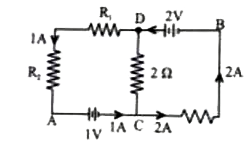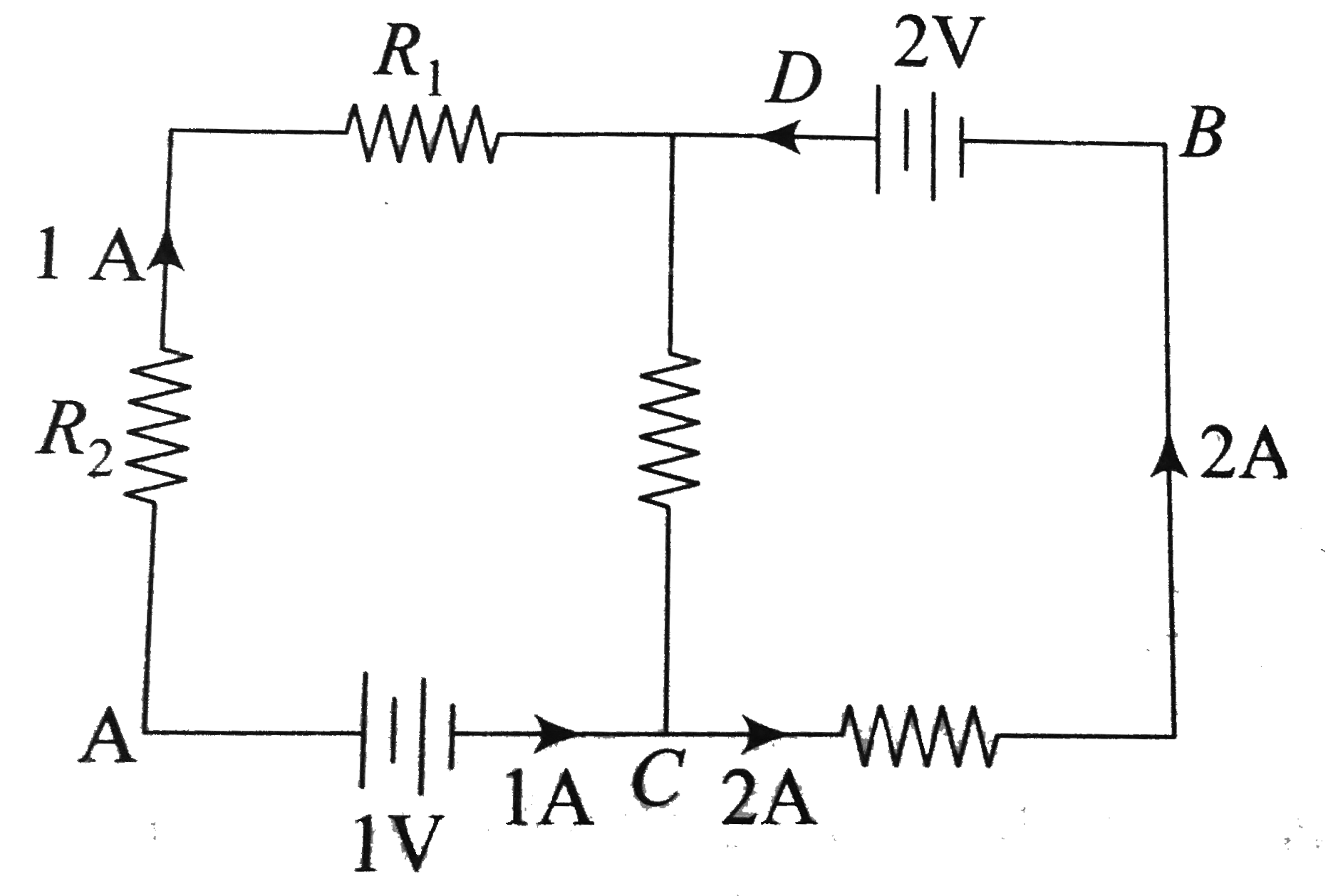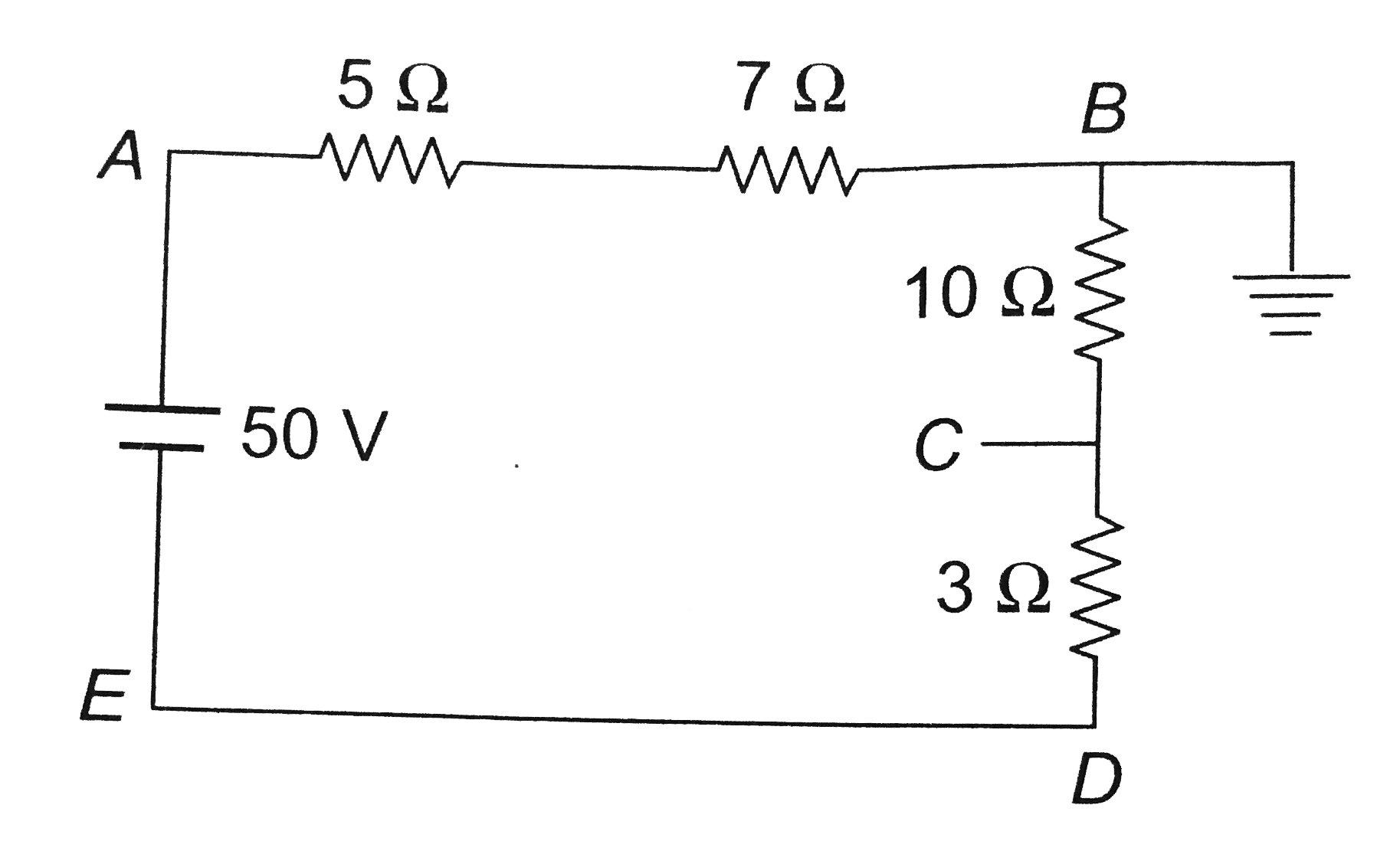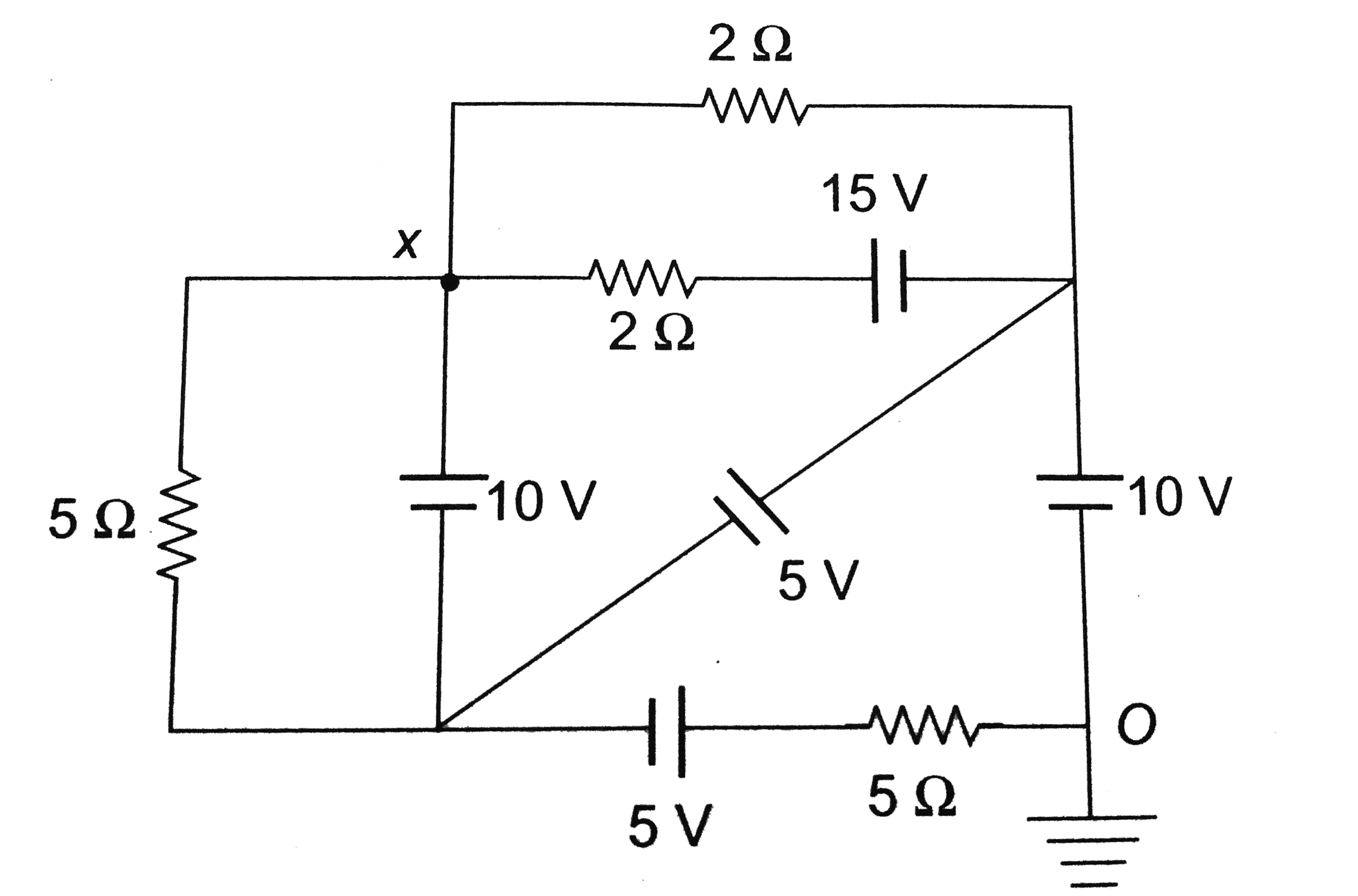In the circuit shown in the figure, if the potential at point A behind to be zero, the potential at point B is :

A
−1V
B
+2V
C
−2V
D
+1V
Text Solution
The correct Answer is:A
Apply Kirchoff voltage law in given path From A to B

Given, VA=0
VA−1+2−2=VB
⇒VB=−1V
|
Topper's Solved these Questions
- CURRENT ELECTRICITYBOOK - PHYSICS WALLAHCHAPTER - CURRENT ELECTRICITYEXERCISE - Level-2
30 Videos
- CURRENT ELECTRICITYBOOK - PHYSICS WALLAHCHAPTER - CURRENT ELECTRICITYEXERCISE - NEET Past 5 Years Questions
23 Videos
- ALTERNATING CURRENT BOOK - PHYSICS WALLAHCHAPTER - ALTERNATING CURRENT EXERCISE - NEET PAST 5 YEARS QUESTIONS
8 Videos
- DUAL NATURE OF RADIATION AND MATTERBOOK - PHYSICS WALLAHCHAPTER - DUAL NATURE OF RADIATION AND MATTEREXERCISE - Neet past 5 years questions
16 Videos
Similar Questions
Knowledge Check
In the circuit shown in the figure, if potentail at point A is taken to be zero, the potential at point B is
 A−1VB+2VC−2VD+1V
A−1VB+2VC−2VD+1VIn a circuit shown in the figure, what is potential of point A?
 A2VB5VC8VD4V
A2VB5VC8VD4VIn the given circuit the potential at point B is zero, the potential at points A and D will be
 AVA=4V,VD=9VBVA=3V,VD=4VCVA=9V,VD=3VDVA=4V,VD=3V
AVA=4V,VD=9VBVA=3V,VD=4VCVA=9V,VD=3VDVA=4V,VD=3V
In the given circuit the potential at point B is zero, the potential at points A and D will be

View SolutionIn the circuit shown, the point B is earthed. The potential at the point 'A' is

View SolutionIn the circuit diagram shown in figure, the potentials of the points B, C and D are respectively.

View SolutionIn the circuit shown in figure potential difference between A and B is

View SolutionIn the circuit shown if point O is earthed, the potential of point X is equal to

View Solution
